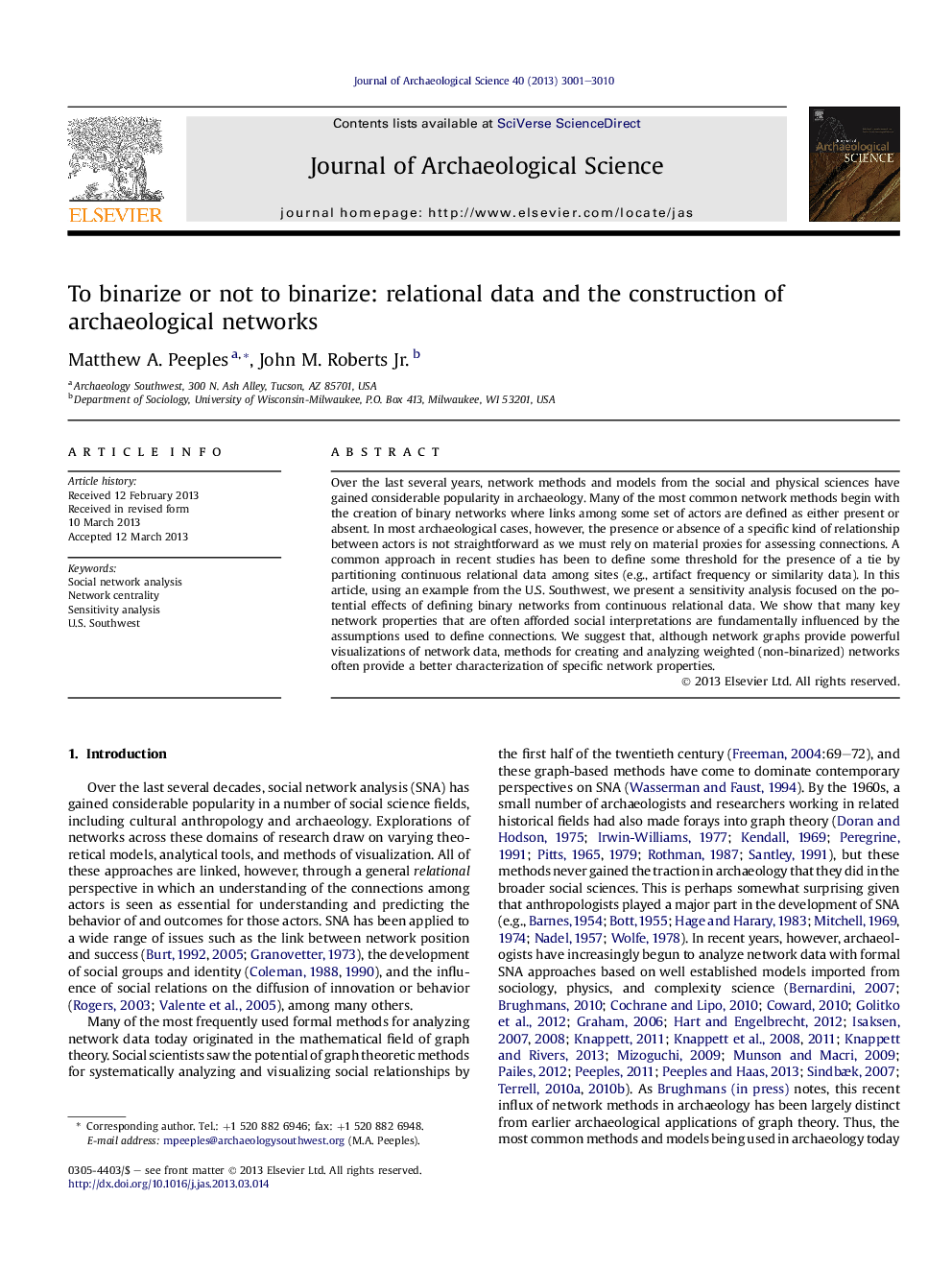| کد مقاله | کد نشریه | سال انتشار | مقاله انگلیسی | نسخه تمام متن |
|---|---|---|---|---|
| 1035502 | 943852 | 2013 | 10 صفحه PDF | دانلود رایگان |

• Network properties are highly sensitive to the methods used to create binary ties.
• The use of weighted network data improves characterizations of network properties.
• Network binarization is unnecessary for many common forms of archaeological data.
Over the last several years, network methods and models from the social and physical sciences have gained considerable popularity in archaeology. Many of the most common network methods begin with the creation of binary networks where links among some set of actors are defined as either present or absent. In most archaeological cases, however, the presence or absence of a specific kind of relationship between actors is not straightforward as we must rely on material proxies for assessing connections. A common approach in recent studies has been to define some threshold for the presence of a tie by partitioning continuous relational data among sites (e.g., artifact frequency or similarity data). In this article, using an example from the U.S. Southwest, we present a sensitivity analysis focused on the potential effects of defining binary networks from continuous relational data. We show that many key network properties that are often afforded social interpretations are fundamentally influenced by the assumptions used to define connections. We suggest that, although network graphs provide powerful visualizations of network data, methods for creating and analyzing weighted (non-binarized) networks often provide a better characterization of specific network properties.
Journal: Journal of Archaeological Science - Volume 40, Issue 7, July 2013, Pages 3001–3010